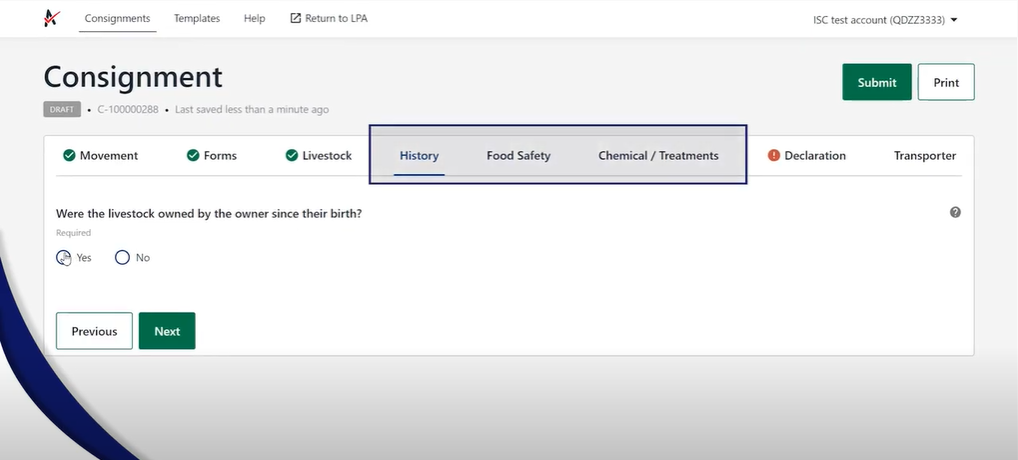Declaring livestock ownership on the NVD
05 October 2021
-Min Read
- Declaring how long you have owned livestock on the NVD provides the receiver of the livestock with an understanding of the food safety and biosecurity risk these animals present.
- When the NVD asks whether you have owned the livestock since birth, you must only tick ‘Yes’ in response to this question if you are certain that all of the livestock in the consignment were bred by you as the owner or vendor of the livestock.
- If one or more of the livestock are non-vendor bred, you must tick ‘No’ in response to this question and answer the subsequent question on how long they have been owned for. Alternatively, if the vendor bred and non-vendor bred livestock can be identified and/or separated and the receiver is willing for this to occur, you may fill out a separate NVD for the vendor bred stock and the non-vendor bred stock.
Read more information on completing the LPA NVD correctly.
If you need to complete an LPA NVD in a hurry, the eNVD system is available 24/7 to create a digital version of the NVD using a computer, tablet or mobile phone.
Watch this video to learn how to use an eNVD.
ISC Customer Service can provide assistance with completing eNVDs if required. ISC Customer Service is available on 1800 683 111 from 8am-7pm (AEDT) Monday to Friday or at info@integritysystems.com.au for assistance.
